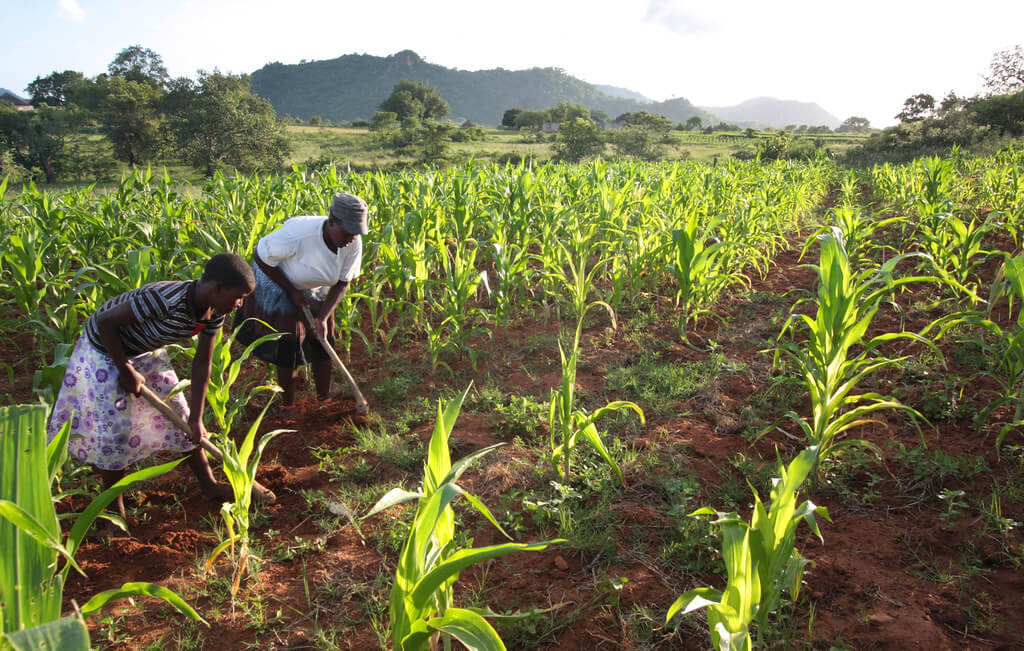Maize is more than just a crop in Kenya—it’s a cornerstone of food security, a driver of economic growth, and a lifeline for millions of farmers and businesses. As we dive into 2025, understanding maize production trends by county offers invaluable insights for Kenyan business professionals, from agribusiness owners to policymakers and investors. With the latest data showing Uasin Gishu leading at 538,196 tons and Isiolo trailing at 197 tons, there’s a clear story of regional strengths, challenges, and untapped potential. This article unpacks maize production across Kenya’s 47 counties, blending data-driven analysis with actionable insights to help you navigate this vital sector.
Whether you’re looking to optimize supply chains, invest in agriculture, or explore export markets, this guide will equip you with the knowledge to make informed decisions. Let’s break it down.
Why Maize Production Matters in Kenya
Maize is Kenya’s staple crop, accounting for over 85% of cereal production and feeding millions daily through dishes like ugali and githeri. In 2023, Kenya produced 4.38 million metric tons of dry maize, a figure that reflects both resilience and the persistent challenges of drought, rising input costs, and pests like the Maize Lethal Necrosis (MLN). Fast forward to 2025, and the county-level data reveals a shifting landscape—one where top producers thrive, and arid regions struggle.
For businesses, maize isn’t just about farming; it’s about opportunity. From milling to livestock feed production and export trade, the maize value chain touches nearly every sector. By targeting high-ranking keywords like “maize production in Kenya,” “top maize-producing counties,” and “Kenya agriculture trends 2025,” this article ensures you’re plugged into the conversation that matters.
Top Maize-Producing Counties in Kenya: The Heavy Hitters
Let’s start with the counties that dominate maize production in 2025. These regions are the backbone of Kenya’s maize supply, and their output shapes national food security and market dynamics.
1. Uasin Gishu – 538,196 Tons
- Why It Leads: Known as Kenya’s breadbasket, Uasin Gishu’s fertile soils, favorable climate, and large-scale farming practices make it a powerhouse. Its proximity to Eldoret also boosts logistics.
- Business Angle: With over half a million tons, this county is a prime target for milling companies and exporters eyeing regional markets like Uganda and Rwanda.
2. Trans Nzoia – 530,183 Tons
- The Close Contender: Just a hair behind Uasin Gishu, Trans Nzoia’s vast arable land and adoption of hybrid seeds keep it competitive.
- Opportunity: Agribusinesses can tap into its surplus for value-added products like maize flour and silage.
3. Narok – 403,429 Tons
- Rising Star: Narok’s expansive plains and irrigation efforts have elevated its maize output, making it a key player in the Rift Valley.
- Insight: Investors in storage and processing facilities could capitalize on its growing production.
4. Bungoma – 267,322 Tons
- Western Power: Bungoma’s smallholder farmers excel with cooperative support, driving consistent yields.
- Tip: Partnerships with local cooperatives could streamline supply chains for businesses.
5. Nandi – 253,293 Tons
- Highland Advantage: Nandi’s cool climate and rich soils support robust maize farming, rounding out the top five.
- Market Potential: Its output fuels local markets and offers export potential.
These top five counties alone account for a significant chunk of Kenya’s maize—over 1.99 million tons—highlighting the concentration of production in the Rift Valley and Western regions. For businesses, this is where the action is: bulk procurement, processing, and distribution hubs thrive here.
Mid-Tier Producers: The Unsung Heroes
Not every county hits the half-million-ton mark, but the mid-tier producers play a critical role in balancing national supply. Here’s a look at some standouts:
- Machakos (253,281 Tons): A surprise contender from the Eastern region, Machakos benefits from improved irrigation and resilient farming practices.
- Nakuru (215,412 Tons): A Rift Valley staple, Nakuru’s output supports both local consumption and trade.
- Kakamega (187,453 Tons): Western Kenya’s maize hub, driven by smallholder dedication.
- Meru (186,881 Tons): Central Kenya’s leader, leveraging fertile volcanic soils.
- Siaya (151,865 Tons): A Lake Victoria region star, showing promise despite erratic rains.
These counties, ranging from 150,000 to 250,000 tons, offer a mix of stability and growth potential. For businesses, they’re ideal for decentralized milling operations or sourcing for niche markets like organic maize products.
Low-Yield Counties: Challenges and Opportunities
At the other end of the spectrum, counties like Isiolo (197 tons), Garissa (204 tons), and Nairobi (643 tons) reflect the struggles of arid climates and urban land constraints. Here’s the bottom five:
- Isiolo – 197 Tons: Arid conditions and limited arable land stifle production.
- Garissa – 204 Tons: Drought and pastoral focus keep maize output minimal.
- Nairobi – 643 Tons: Urbanization leaves little room for farming.
- Marsabit – 2,359 Tons: Harsh weather limits yields.
- Turkana – 2,403 Tons: Water scarcity hampers progress.
While these numbers are small, they signal untapped potential. Counties in arid and semi-arid lands (ASAL) like Mandera, Wajir, and Tana River could see boosts with irrigation and drought-resistant varieties—opportunities for agribusinesses in seed supply or tech-driven farming solutions.
Regional Breakdown: Where Maize Thrives
To get a clearer picture, let’s group production by region:
- Rift Valley (1.65M Tons): Uasin Gishu, Trans Nzoia, Narok, Nakuru, and Nandi dominate, contributing over 50% of national output.
- Western (716K Tons): Bungoma, Kakamega, and Busia lead here, fueled by smallholder networks.
- Nyanza (600K Tons): Siaya, Kisii, and Migori shine, supported by rainfall and fertile soils.
- Eastern (435K Tons): Machakos and Makueni stand out, defying semi-arid challenges.
- Central (273K Tons): Meru and Kirinyaga carry the load, despite smaller farm sizes.
- Coast (274K Tons): Kilifi and Kwale surprise with coastal production.
- ASAL Regions (<50K Tons): Mandera, Wajir, and Garissa lag, but innovation could change that.
This regional lens highlights disparities—and opportunities. Businesses can target Rift Valley for scale, Nyanza for consistency, and ASALs for growth through tech investments.
Factors Driving Maize Production in 2025
What’s behind these numbers? Several factors shape Kenya’s maize landscape:
- Climate and Rainfall: The Rift Valley’s reliable rains contrast with ASAL droughts, directly impacting yields.
- Soil Fertility: Volcanic soils in Meru and highland fertility in Nandi boost output, while depleted soils elsewhere drag it down.
- Input Access: Fertilizer costs, up 70% since 2021, hit smallholders hard, but top counties leverage subsidies and cooperatives.
- Technology Adoption: Hybrid seeds and mechanization (e.g., tractors in Uasin Gishu) lift yields, while manual farming limits others.
- Pests and Diseases: MLN remains a threat, with losses up to 100% in affected areas, though resistant varieties offer hope.
For businesses, these drivers suggest strategic focus areas: supply affordable inputs, invest in pest control solutions, or promote climate-smart agriculture.
Economic Impact: Maize as a Business Catalyst
Maize isn’t just food—it’s money. In 2023, locally produced maize was valued at Ksh 199 billion, with farm gate prices at Ksh 4,094 per 90kg bag and wholesale at Ksh 5,918. Assuming similar trends in 2025, the top counties alone could generate billions in revenue.
- Jobs: Over 3 million smallholder farmers rely on maize, alongside thousands in milling, transport, and retail.
- Trade: Kenya’s 2023 surplus of 1.03 million tons cut imports from 762,150 tons (2022) to 488,535 tons, a trend likely continuing with strong 2025 yields.
- Value Addition: From flour to animal feed, processing maize unlocks higher margins.
Businesses can ride this wave by investing in storage (post-harvest losses hit 30%), milling, or export logistics—especially with President Ruto’s 2025 goal to end grain imports.
Challenges Facing Maize Production
Despite the highs, maize farming faces hurdles:
- Climate Change: Droughts and floods threaten yields, especially in ASALs.
- Input Costs: Fertilizers and seeds remain pricey, squeezing profits.
- Market Access: Smallholders in remote counties struggle to reach buyers.
- Post-Harvest Losses: Poor storage cuts into supply.
These challenges aren’t roadblocks—they’re opportunities. Businesses offering affordable inputs, weather insurance, or mobile market platforms can turn pain points into profits.
Opportunities for Kenyan Businesses in 2025
Ready to seize the maize moment? Here’s how:
- Invest in Top Counties: Partner with farmers in Uasin Gishu and Trans Nzoia for bulk supply deals.
- Tech Solutions: Bring irrigation, drones, or AI yield predictors to mid-tier and low-yield counties.
- Value Addition: Set up mills or feed plants near Narok and Bungoma for cost efficiency.
- Export Push: With surpluses growing, target East African markets hungry for Kenyan maize.
- Sustainability: Promote organic farming or drought-resistant seeds in ASALs for premium pricing.
The data screams potential—don’t sleep on it.
Looking Ahead: Maize Production Trends for 2030
If 2025 is a snapshot, what’s the big picture? With Kenya aiming for 60 million bags annually by 2025 to meet demand, county-level growth will be key. Expect:
- Tech Adoption: More mechanization in Rift Valley, lifting yields past 6 tons/ha.
- Climate Resilience: ASALs could rise with investment in irrigation and greenhouses.
- Policy Boost: Subsidies and research into MLN-resistant varieties will shape output.
Businesses that align with these trends—think seed innovation or export logistics—will lead the pack.





